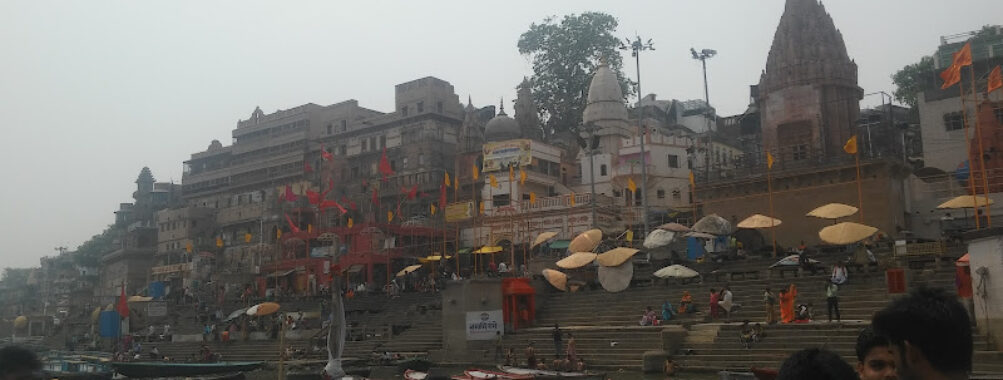
Subah-e-Banaras
“`html
Table of Contents
Description
Subah-e-Banaras is not just an event—it’s an experience that seeps into your senses before the sun even peeks over the horizon. It takes place along the ghats of Banaras, where the Ganges whispers stories of devotion, music, and timelessness. I remember my first morning there; I was half-asleep, clutching a cup of steaming chai, wondering why on earth I’d dragged myself out of bed at 4:30 a.m. But the moment the first notes of the morning raga floated across the river, I knew I was witnessing something extraordinary.
This cultural gathering celebrates the spirit of Banaras through classical music, yoga, and the mesmerizing sight of the rising sun over the Ganga. It’s calm yet alive, spiritual yet grounded—an experience that gently shakes you awake, not just physically but emotionally too. The air smells faintly of sandalwood and incense, mixed with the earthy scent of the river. Locals come with devotion; travelers come with curiosity; and somehow, everyone leaves with a strange sense of peace.
While most visitors gush about the serenity, some find it a bit crowded or too early in the morning for their liking. Fair enough—it’s not for everyone. But for those who appreciate culture and quiet reflection, Subah-e-Banaras feels like a secret handshake with the soul of the city. The artists who perform there—flutists, sitar players, singers—don’t just entertain; they connect. And that connection, fleeting as it may be, lingers long after the sun climbs high and the day begins.
Key Features
- Early morning live classical music performances by local and renowned artists.
- Yoga and meditation sessions held by the river, open to all visitors.
- Traditional aarti (prayer) ritual performed as the sun rises, creating a serene atmosphere.
- Opportunities to interact with local musicians, priests, and artisans.
- Wheelchair accessible parking and easy access to the main viewing area.
- Photography-friendly environment, though respectful discretion is appreciated during rituals.
- Availability of tea stalls and small eateries nearby serving authentic Banarasi chai and snacks.
- Regular cultural programs organized by local associations to preserve and promote Banaras’s heritage.
What struck me most was how naturally everything unfolds—no loudspeakers blaring, no forced enthusiasm. Just the river, the music, and the soft hum of life waking up. You can sit quietly on the steps, sip your tea, and watch the sunlight dance on the water. It’s a kind of beauty that doesn’t demand attention; it just exists, quietly magnificent.
Best Time to Visit
Subah-e-Banaras is best experienced during the cooler months—October through March—when the mornings are crisp, and the fog rolling off the Ganges gives everything a dreamlike quality. The event starts just before dawn, so plan to arrive around 5:00 a.m. to catch the full spectacle. Summers can be humid and a bit uncomfortable, and the monsoon season, while poetic, often disrupts the schedule with unpredictable rain.
If you’re someone who enjoys festivals, visiting during Dev Deepawali or Kartik Purnima adds another layer of magic. The ghats are illuminated, and the entire city seems to glow. But on regular days, the quieter mornings have their own charm—you can actually hear the birds, the temple bells, and the soft pluck of the sitar without distraction.
How to Get There
Reaching Subah-e-Banaras is relatively straightforward. The nearest airport is in Varanasi, and from there, you can hire a cab or auto-rickshaw to the ghats. If you’re staying within the city, an early morning cycle rickshaw ride is an adventure in itself. The streets are nearly empty at that hour, and you’ll pass sleepy tea vendors setting up their stalls, the faint aroma of freshly fried kachoris wafting through the air.
For those coming from nearby towns, local trains and buses connect easily to Varanasi. Once you’re near the ghats, it’s best to walk the last stretch—the narrow lanes are part of the charm. Just remember, footwear isn’t always welcome near the water, so wear something easy to slip off.
Tips for Visiting
If you’re planning to experience Subah-e-Banaras, here are a few things I’ve learned from my visits (and from watching a few sleepy tourists struggle through their first dawn outing):
- Arrive early: The magic begins before sunrise. Getting there by 4:45 a.m. ensures you find a good spot and soak in the pre-dawn calm.
- Dress modestly and comfortably: Light layers work best. The mornings can be chilly, especially in winter.
- Carry a shawl or mat: Sitting on the stone steps can get cold and damp. Locals often bring small mats or cloths to sit on.
- Respect the rituals: Avoid loud conversations or flash photography during prayers or performances.
- Try the local tea: There’s something about sipping Banarasi chai while the sun rises—it’s almost ritualistic.
- Stay alert but open: The area is safe, but like any busy spot, keep your belongings close. Most locals are friendly and welcoming.
- Take your time: Don’t rush off once the ceremony ends. The post-event calm is just as beautiful as the performance itself.
And here’s a small personal tip: if you can, visit more than once. The first time, you’ll be overwhelmed by the sights and sounds. The second time, you’ll start noticing the subtleties—the way the light hits the water, the rhythm of the chants, the quiet smiles exchanged among strangers. That’s when you truly start to feel the pulse of Banaras.
Subah-e-Banaras isn’t a tourist attraction in the usual sense—it’s more like a living poem that unfolds each morning. It’s for those who seek meaning in silence, who find beauty in the ordinary, and who don’t mind waking up before dawn to catch a glimpse of something eternal. If you’re one of those travelers who likes to collect moments rather than souvenirs, this is one you shouldn’t miss.
“`
Location
Places to Stay Near Subah-e-Banaras
Find and Book a Tour
Explore More Travel Guides
No reviews found! Be the first to review!